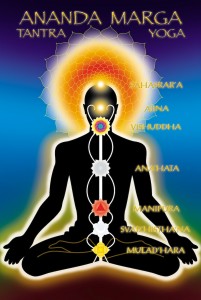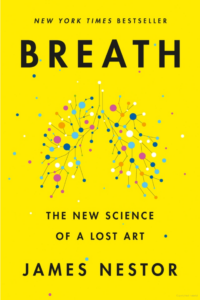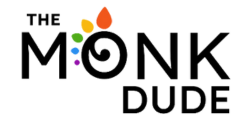Meditation Tips: The Nose Knows
Meditation was first developed by yogis (yoga adepts) in ancient India more than 7000 years ago. These were the original yogis, seekers of truth, mystics who subjected themselves to intense mental and physical discipline in order to awaken their inner potential and achieve Self-Realization. As they fine tuned their intuition they became aware of a mysterious energy flowing through their bodies known as Prana in Sanskrit, meaning ‘vital energy’. Later the Chinese yogis, or Taoists, called it Chi. This energy flow through us, filling both body and mind with vitality. Our primary source of vital energy is our breath.
As we breathe in, the prana energy in the air enters our nostrils and flows through invisible channels that weave downwards, crossing the spine at several points. Where these energy channels cross they form vortex’s of vital energy, called Chakras. There are seven major Chakras situated along the spinal column, serving as substations of the mind, governing our feelings, desires and potentialities.

The two prana channels beginning at the nostrils have distinct functions. The right nostril channel relates to physically oriented functions of mind and body. If there is a strong airflow through your right nostril, you will be able to digest food far more readily. On the other hand, if there is a stronger flow of air and prana through the left nostril your system will engage more subtle faculties. You will be able to concentrate much better in meditation.
Let’s pause for a moment here and consider whether or not this is all real. Maybe those yogis were high on some psychedelic plant and imagined the whole thing…😳
The Research
Lucky us, we live in an age of doubters and sceptics which compels us to question superstition and seek validation of strange claims such as the existence of vital energy, chakras and the rest. The good news is, at least some of this has been well researched, especially the effects of breathing in various ways. In his remarkable book, Breathe – The New Science of a Lost Art, (New York Times Best Seller) James Nestor explains how many ancient beliefs about breathing and the breath actually work.
 Breathing through the nose, for example, is fundamental to many yoga practices, and guess what? It turns out that it has huge benefits for both physical and mental health.
Breathing through the nose, for example, is fundamental to many yoga practices, and guess what? It turns out that it has huge benefits for both physical and mental health.
Another set of research has confirmed that breathing through your right nostril has a different effect on your body and mind than breathing through your left nostril. This is exactly what yogis have been telling us for millennia. Clever yogis.
The Practice
Try this: before meditation check to see which of your nostrils is dominant. Hold your hand beneath your nose to feel which side has a stronger airflow. If your left nostril is dominant, fine, go ahead and meditate. If your right nostril has a stronger flow, lie on your right side resting your head on your arm. After a minute or two you will find that the energy has shifted and now you have a stronger airflow through your left nostril. Time to meditate. Your concentration will be significantly better if you have a stronger flow of air through your left nostril, because this activates the Ida Nadi (left prana channel).
Conversely, after lunch, if you want to digest your meal well, lie on your left side to open the right nostril and stimulate the flow of energy through your Pingala nadi (right Prana channel). This is particularly important if you have eaten late at night (not a good habit anyway). If possible, you should then take a walk – this aids greatly in digestion at night. Then you should sleep on your left side to avoid indigestion or acid reflux. This also has to do with the positioning of the digestive organs in the body. Check out paintings of ancient Roman feasts. They used to lie down to eat, and they always lay on their left side.
One of the specialties of the Tantra Yoga that I teach is the integration of body and mind. Our state of health, what we eat, how we exercise, and how we breathe, all affect our state of mind. And vice versa. Many meditation tips are simply a matter of understanding more about how our body and mind interact. One of the eight limbs of astaunga yoga is Pranayama, which is a whole system of control our vital energy through the breath.
Please note: advanced Pranayama exercises should only be practiced under the guidance of a properly trained teacher.
But this simple practice described above, where we ensure that our left nostril is dominant for meditation is quite safe for anyone.
Enjoy your meditation!
Check out our Bliss Timer app: www.BlissTimer.com
Or perhaps you would like to invite me to run a workshop for your college or company. https://www.themonkdude.com/contact/

How meditation effects our subconscious mind? Is Brain Wave Entrainment more effective than meditation to change negative emotions in our subconscious mind?
Teresa, thanks for your question. In the yoga based system of meditation there are specific practices designed to purify each of the five layers of the mind, including the subconscious (manomaya Kosa in samskrta). This system is sometimes known as Astaunga Yoga (8 limbed yoga, which includes a range of meditation techniques), and the specific practice for the subconscious mind is known as Pranayama (control of the vital energy of the body through breathing exercises). This system dates back at least 7000 years, so you could say it has been pretty thoroughly tested. I am not an expert in Brain Wave Entrainment, or bio-feedback which is the methodology it uses, but I have a basic understanding of how it works. Though I know this helps people to relax and achieve a calm mental state quite quickly I do not believe it can take us much further than that. Two reasons I do not think this kind of technique is a substitute for meditation. Firstly it is an infant science – we are still groping in the dark trying to understand the brain from the outside, whereas yogis and mystics have been illuminating the mind from within with the light of consciousness for thousands of years. Second reason is the limitation of physical instruments. By their nature, they can only measure the activity of the brain, not the mind, which is non-material. And the mind is the realm of meditation, not just the brain. What we observe in the brain with our still relatively crude instruments, are just echoes of the vast and complex array of thoughts and emotions that we experience in the mind and witness with our consciousness.
Good. Excellent Advice. I shall follow and let you know about the developments in my meditation. Thanks for the advise.
Padmanabhan
To the Monk Dude
Love you work.
Would it b possible to address the clearing of the Chakra system using meditation.
(especially important to me would be identifying blocked channels affecting certain chakra/s.
Cheers the Geek
Thank you ‘the Geek’ for this question. Short answer is a big yes. The whole science of Chakras and the related system of Nadiis (vital energy channels) and Vrtiis (mental propensities) was first discovered by the very same yogis of ancient India who invented meditation. There are meditation techniques whose precise purpose is to balance the activity of the Chakras. If you are seriously interested in learning these practices, let me know and I will advise you on how to get started.
Wow, now I know! Thank you very much for your teaching!